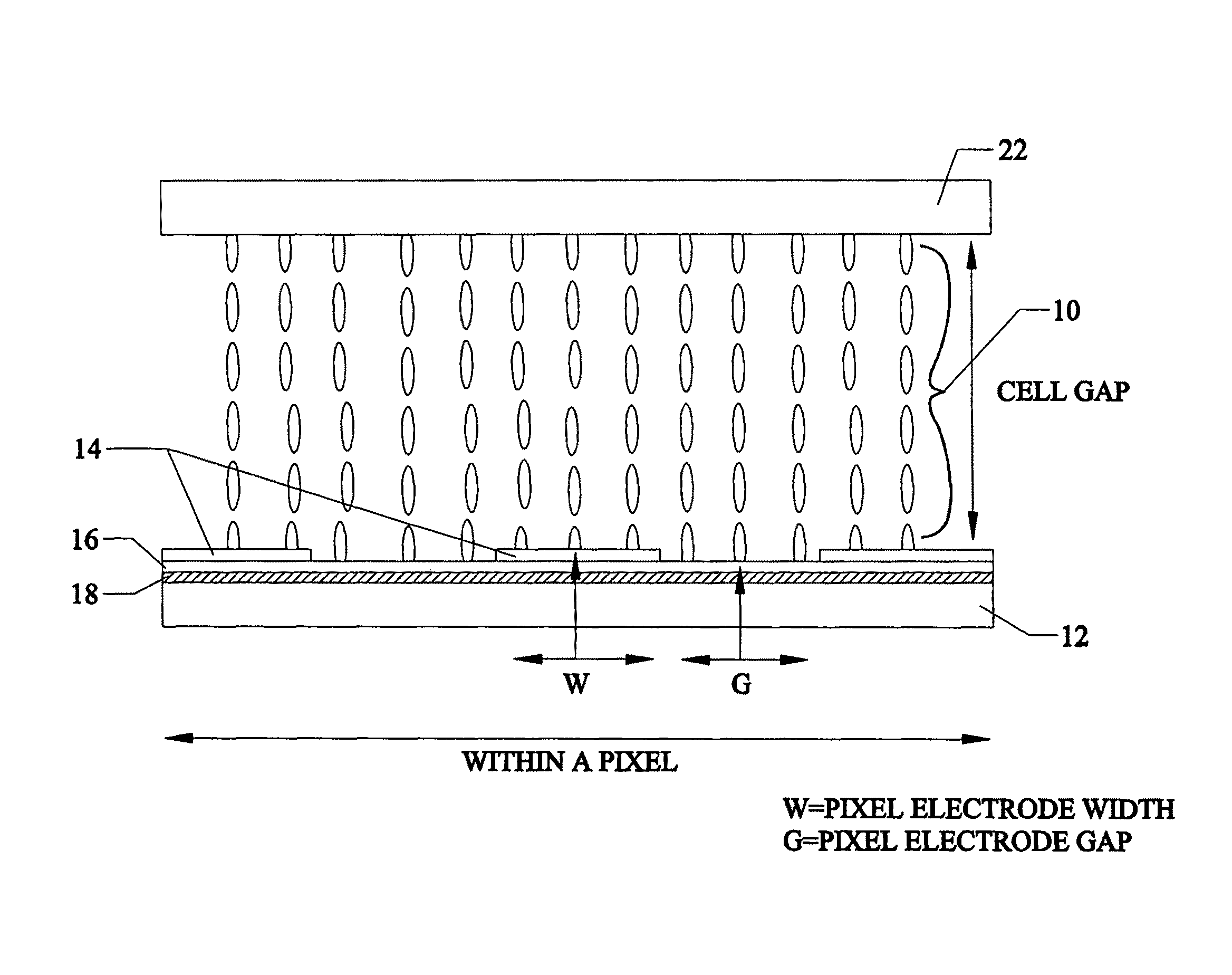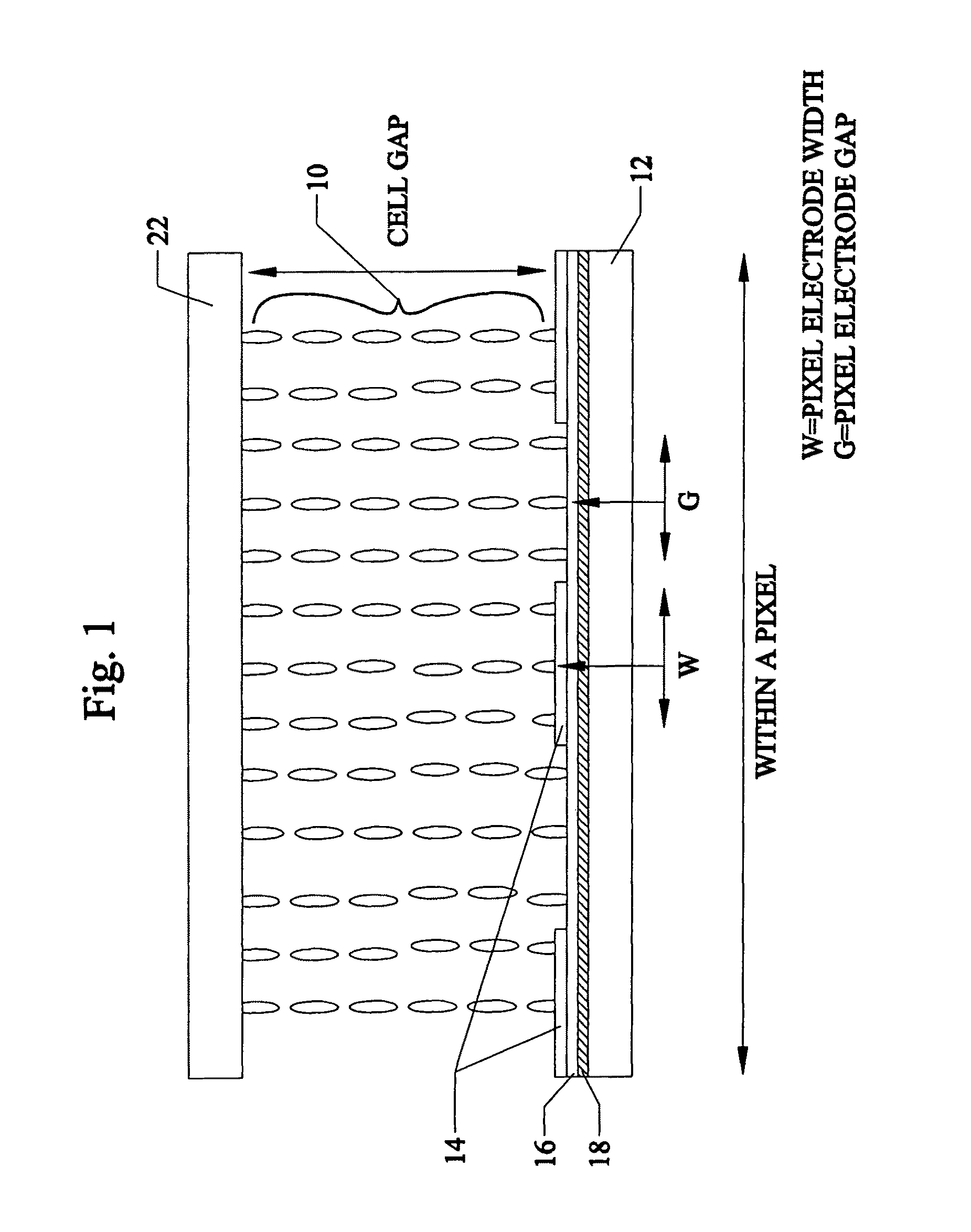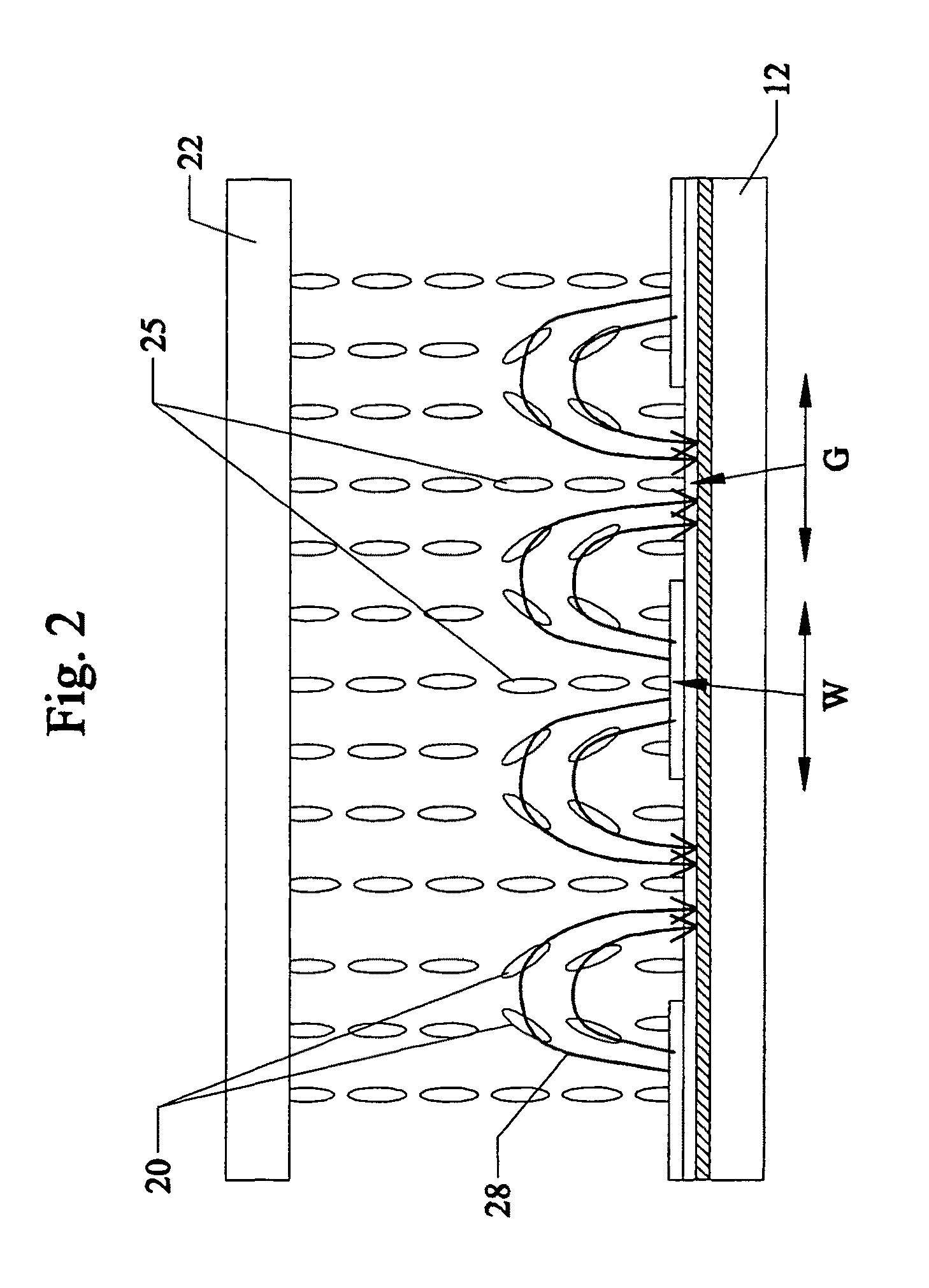Fast response liquid crystal mode
a liquid crystal mode and fast response technology, applied in non-linear optics, instruments, optics, etc., can solve the problems of increasing fabrication difficulty, limited switching speed and limiting application of nematic liquid crystals today, and achieves high stability and fast relaxation
- Summary
- Abstract
- Description
- Claims
- Application Information
AI Technical Summary
Benefits of technology
Problems solved by technology
Method used
Image
Examples
Embodiment Construction
ent invention with asymmetric upper and lower electrode and narrower electrode width and gap of 2 micrometers (μm).
[0032]FIG. 15 shows the rise time of the simulated optical response in FIG. 14.
[0033]FIG. 16 shows the fall time of the simulated optical response in FIG. 14.
[0034]FIG. 17 shows the simulated optical response of the device in FIG. 14 at 2 Volts (V).
[0035]FIG. 18 shows the rise and fall times of the device in FIG. 14 at different applied voltages.
[0036]FIG. 19 shows the simulated optical response of the present invention with lower electrode only and wider electrode width and gap of 5 μm.
[0037]FIG. 20 shows the rise time of the simulated optical response in FIG. 19.
[0038]FIG. 21 shows the fall time of the simulated optical response in FIG. 19.
[0039]FIG. 22A shows the transmission profile of the present invention with lower electrode only.
[0040]FIG. 22B shows the director distribution of the present invention with lower electrode only.
[0041]FIG. 23A shows the transmission...
PUM
| Property | Measurement | Unit |
|---|---|---|
| length | aaaaa | aaaaa |
| width | aaaaa | aaaaa |
| width | aaaaa | aaaaa |
Abstract
Description
Claims
Application Information
 Login to View More
Login to View More - R&D
- Intellectual Property
- Life Sciences
- Materials
- Tech Scout
- Unparalleled Data Quality
- Higher Quality Content
- 60% Fewer Hallucinations
Browse by: Latest US Patents, China's latest patents, Technical Efficacy Thesaurus, Application Domain, Technology Topic, Popular Technical Reports.
© 2025 PatSnap. All rights reserved.Legal|Privacy policy|Modern Slavery Act Transparency Statement|Sitemap|About US| Contact US: help@patsnap.com



